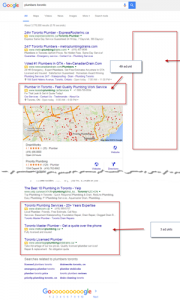What’s the ideal state of marketing? Columnist Scott Rayden looks to answer that question and offers guiding principles to put you on the right path to consumer engagement and growth.
 Let me start by saying right off the bat that I don’t believe the ideal state of marketing is ever achievable — at least not in my lifetime. The speed of innovation today has created a constantly changing environment that marketers need to adjust to in real time. New technology, new platforms, information more readily accessible for consumers — the list goes on.
Let me start by saying right off the bat that I don’t believe the ideal state of marketing is ever achievable — at least not in my lifetime. The speed of innovation today has created a constantly changing environment that marketers need to adjust to in real time. New technology, new platforms, information more readily accessible for consumers — the list goes on.
I do believe, however, that achieving the ideal state of marketing should be something that drives every marketing organization. It should frame marketers’ thinking and fuel the strategies and tactics used to drive meaningful engagement with consumers and growth for brands.
Most marketing organizations I’ve seen over my 10-plus years in this business start from the wrong place: hitting a marketing KPI that will lead to revenue. While marketers are accountable for these KPIs, starting here is, more often than not, a means to an end.
The mission of hitting these KPIs forces you to think more about your marketing strategies and tactics than it does your consumer, and that’s a big mistake. It’s what drives brands to focus on channels and creates marketing organizations that are built in silos and lack real integration.
So what is the ideal state of marketing? This is something I spend a great deal of time thinking about — learning and analyzing different approaches, philosophies, techniques and tactics. Ultimately, while this will be unique for each brand, I do believe some guiding principles should be consistent for everyone.
Work backwards
The first step in the process of achieving the ideal state is describing what your ideal state looks like. When was the last time you sat down with your team and just imagined what marketing perfection would look like? Use that as your starting point and work backwards.
I see too many organizations start the wrong way. They start with what worked at a previous company, focus on a channel they think will work well, or just cast the net out wide and hope the data that comes from it will be the guiding light.
Get agreement on what “perfect” looks like in your organization and start there.
Balance your goals with a consumer focus
The second step is to get comfortable with the fact that the ideal state of marketing has two missions: achieving a brand’s objectives and focusing deeply on the consumer’s desires, motivations, behaviors and needs.
One is a lot easier to quantify, but it is by no means more important; a singular focus on goals will restrict the potential for transcendent future growth.
Start with the customer. Always.
While brands need to strive for the balance I just mentioned, the process should always begin with the consumer. This is not a new concept, of course; brands have been doing this (or at least talking about doing it) for years.
Over the last few years, data has allowed us more insight than ever before. Leveraging first-, second-, and third-party data, using analytics to understand behavior and crafting usability studies are all pieces to the consumer puzzle.
However, two questions are far too often overlooked when focusing on the consumer. Your consumer focus should be driven by:
- What are the most critical moments/touch points in time through the buying journey?
- What are the key questions that need to be addressed to move the consumer from one important touch point to the next?
Focusing on these two questions has dramatically changed the way I think about marketing and how I think about the strategies and tactics used to drive the right kind of engagement.
Understand the objective
Too often, marketers build strategies around a conversion metric that is deep in the buying process (e.g., a lead or purchase). I’ve seen countless media campaigns that focus on this type of conversion while completely neglecting the specific moments that lead the consumer to take action.
While these conversions do drive revenue and growth, they are also a single step in a much broader set of important consumer moments. If the customer didn’t get the experience needed earlier on in the process, no matter of money spent on marketing will lead them to this type of conversion.
The objective can’t be all about a conversion; it should focus on the path to conversion. If you have done your job along the path to purchase, the costs to acquire at the bottom of the funnel should be much more efficient.
Test beyond the norm
Testing isn’t a new concept, but I believe more focus should be placed on testing which moments in the journey are the critical ones to focus on, and test the questions that need to be answered for the consumer to feel ready to move to the next touch point.
Conversion rate optimization, landing page optimization and creative testing all play a huge role in marketing today. What I don’t see much of is testing what you believe to be the important touch points and the questions you think should be answered to move to the next phase in the buying process.
Look at data differently
Data drives most marketing organizations, but there’s very little consistency in the way those organizations look at (and react to) data. I’ve always liked to break data down into three different views: data to understand; data to optimize against; and data used to measure.
There is a softer side of data that demands more attention. These softer data points I’m referring to focus on the customer’s needs, motivations and ultimate missions.
Why does someone buy or not buy? It’s not because they need a new WiFi router; it’s because they need WiFi to work faster so their kids can do their reading assignments.
It’s more than the features-vs.-benefits distinction that e-commerce marketers should recognize; it’s understanding the customer has an outcome in mind that goes beyond the purchase, and being able to address that outcome in a marketing strategy.
Focus on alignment
Marketers can never achieve the ideal state without true alignment and integration. They go hand-in-hand and are far too often issues that limit growth.
Fractured marketing organizations, which I see all too often, have different groups and different leaders, all with slightly diverging priorities and views on overarching goals. Internal team alignment should be a core strategy, something that’s prioritized and measured as religiously as any other KPI.
As I mentioned at the top, I don’t believe anyone will ever achieve the ideal state of marketing — and if someone does, it’ll last about an hour, given the dynamic nature of our industry. But the path to the ideal state, starting with the very definition of the state itself, is something that all marketers should prioritize.
Establish the ideal and put the customer at its core, and things like KPIs will become easily identifiable byproducts instead of carrying too much weight as restricting, short-sighted goals.
Some opinions expressed in this article may be those of a guest author and not necessarily Marketing Land. Staff authors are listed here.
Marketing Land – Internet Marketing News, Strategies & Tips
(47)







